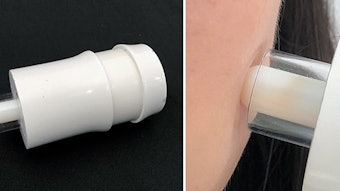See the complete article in the September 2005 digital magazine.
Friction is an important characteristic of skin because it allows us to execute many of our daily activities. In addition, friction studies offer insight into how skin and the skin surface change across age, gender, race, anatomical site, and chemical applications. This can provide better information about expected skin variations in the population and why certain topical applications are effective. Comparative studies are particularly useful in following how the skin mechanically changes under different conditions. This article reviews and compares the results from various methods of measuring skin friction coefficient values.
Studying the friction of skin supplements other mechanical tests. Friction studies can be conducted with noninvasive methods and give a measure of the skin’s health (i.e., skin hydration). For example, Naylor1 showed that moistened skin has an elevated friction response and El-Shimi2 demonstrated that drier skin has a lowered friction response. Friction provides a quantitative measurement to assess skin.
The friction parameter generally measured is the coefficient of friction. To measure the friction coefficient, a surface is brought into contact with another and moved relative to it. When the 2 surfaces are brought into contact, the perpendicular force is defined as the normal force (N). The friction force (F) is the force that opposes relative movement between the 2 surfaces. From Amonton’s law, the coefficient of friction (μ) is defined as the ratio of the friction force to the normal force: μ = F / N
Although one can measure static friction coefficients, most of the friction studies on skin have, for simplicity, dealt with dynamic friction coefficients wherein the two surfaces move at a relative constant velocity. This overview references the dynamic coefficient of friction, unless otherwise noted. Amonton’s Law makes certain assumptions about the two surfaces. Scientists disagree about whether these assumptions strictly apply when measuring the friction coefficient of skin (see sidebar).
Variations because of experimental design: Previous studies have reported various values for the skin’s friction coefficient. The wide range in results may be due to natural variations in skin, but also to differences in probe movement, geometry, controlled monitoring of the normal force, and material chosen to make the friction measurement.










